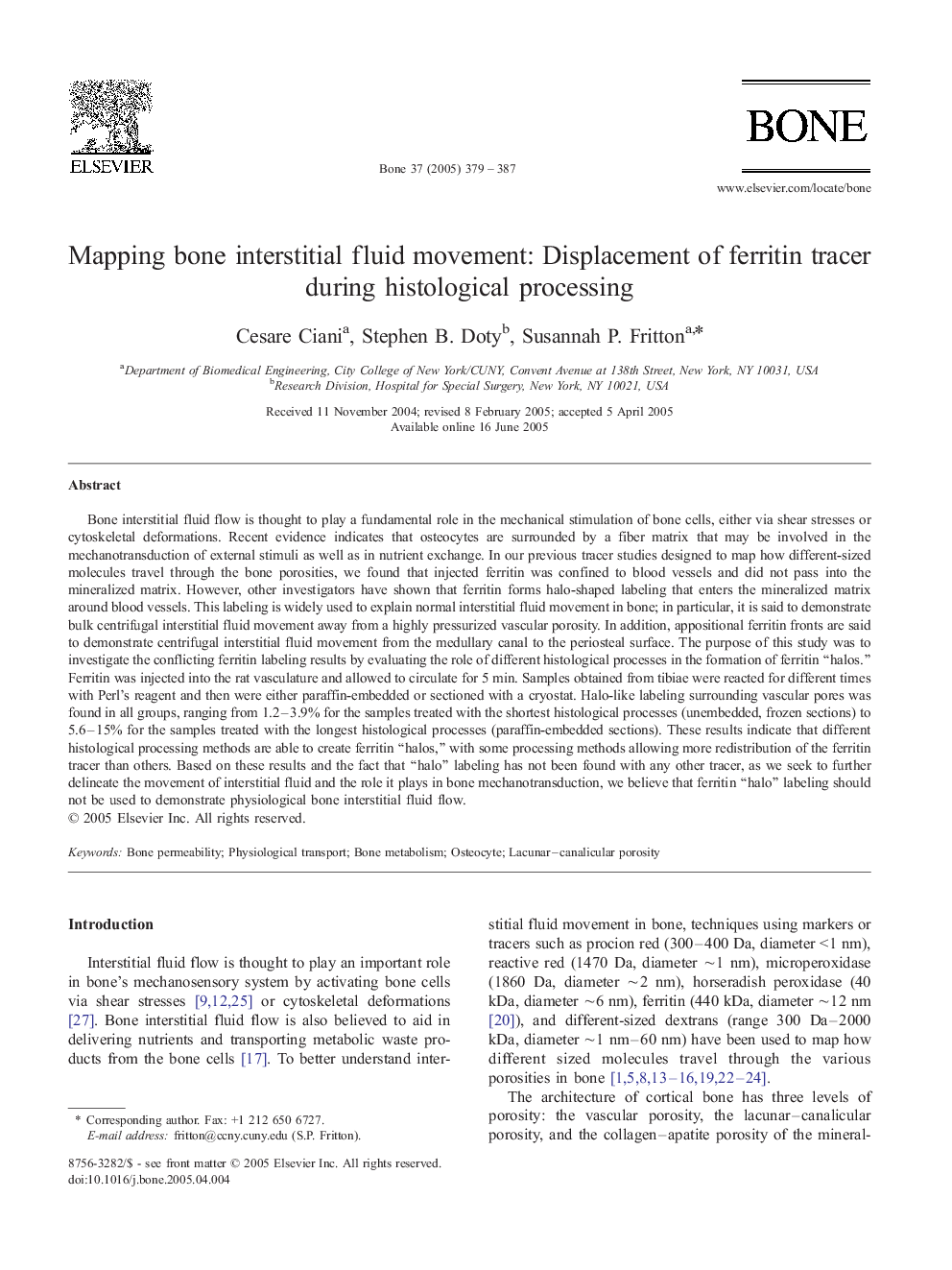| Article ID | Journal | Published Year | Pages | File Type |
|---|---|---|---|---|
| 9104323 | Bone | 2005 | 9 Pages |
Abstract
Bone interstitial fluid flow is thought to play a fundamental role in the mechanical stimulation of bone cells, either via shear stresses or cytoskeletal deformations. Recent evidence indicates that osteocytes are surrounded by a fiber matrix that may be involved in the mechanotransduction of external stimuli as well as in nutrient exchange. In our previous tracer studies designed to map how different-sized molecules travel through the bone porosities, we found that injected ferritin was confined to blood vessels and did not pass into the mineralized matrix. However, other investigators have shown that ferritin forms halo-shaped labeling that enters the mineralized matrix around blood vessels. This labeling is widely used to explain normal interstitial fluid movement in bone; in particular, it is said to demonstrate bulk centrifugal interstitial fluid movement away from a highly pressurized vascular porosity. In addition, appositional ferritin fronts are said to demonstrate centrifugal interstitial fluid movement from the medullary canal to the periosteal surface. The purpose of this study was to investigate the conflicting ferritin labeling results by evaluating the role of different histological processes in the formation of ferritin “halos.” Ferritin was injected into the rat vasculature and allowed to circulate for 5 min. Samples obtained from tibiae were reacted for different times with Perl's reagent and then were either paraffin-embedded or sectioned with a cryostat. Halo-like labeling surrounding vascular pores was found in all groups, ranging from 1.2-3.9% for the samples treated with the shortest histological processes (unembedded, frozen sections) to 5.6-15% for the samples treated with the longest histological processes (paraffin-embedded sections). These results indicate that different histological processing methods are able to create ferritin “halos,” with some processing methods allowing more redistribution of the ferritin tracer than others. Based on these results and the fact that “halo” labeling has not been found with any other tracer, as we seek to further delineate the movement of interstitial fluid and the role it plays in bone mechanotransduction, we believe that ferritin “halo” labeling should not be used to demonstrate physiological bone interstitial fluid flow.
Related Topics
Life Sciences
Biochemistry, Genetics and Molecular Biology
Developmental Biology
Authors
Cesare Ciani, Stephen B. Doty, Susannah P. Fritton,
